 |
Foodoric and associated companies are chemicals manufacturing companies operated in India USA UAE Europe Asia and other countries around the world. The associates have one or more of certifications like ISO-9001, ISO-14001, ISO-22000:2005, FSSC 22000; OHSAS 18001; Kosher and Halal Certified; HACCP, FSSAI and FDA - GMP approval. Buyers are assured of good quality and CIF wholesale and retail price for supplies of our Magnesium Trisilicate. |

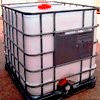
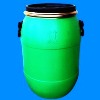
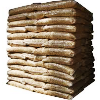
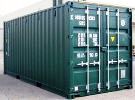
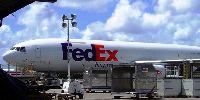
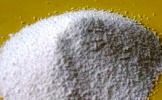
Magnesium Trisilicate BP USP FCC Food Grade Manufacturers Suppliers
Magnesium Trisilicate
BP USP FCC Food Grade

Magnesium Trisilicate CAS Number 14987-04-3 or (39365-87-2 for hydrate), Molecular Formula: Mg2O8Si3, Molecular Weight: 260.86
Magnesium Silicate FCC Food Grade Specifications
Synthetic Magnesium Silicate
INS: 553(i) CAS: [1343-88-0]
DESCRIPTION
Magnesium Silicate occurs as a very fine, white powder free from grittiness. It is a synthetic, usually amorphous form of magnesium silicate in which the molar ratio of magnesium oxide (MgO) to silicon dioxide (SiO2) is approximately 2:5. It is insoluble in water and in alcohol, but is readily decomposed by mineral acids. The pH of a 1:10 slurry is between 7.0 and 10.8.
REQUIREMENTS
Identification:
A. Mix about 500 mg of sample with 10 mL of 2.7 N hydrochloric acid, filter, and neutralize the filtrate to litmus paper with 6 N ammonium hydroxide. The neutralized filtrate gives positive tests for Magnesium.
B. Prepare a bead by fusing a few crystals of sodium ammonium phosphate on a platinum loop in the flame of a Bunsen burner. Place the hot, transparent bead in contact with a sample, and again fuse. Silica floats about in the bead, producing, upon cooling, an opaque bead with a web-like structure.
Assay: Not less than 15.0% of MgO and not less than 67.0% of SiO2, calculated on the ignited basis.
Fluoride: Not more than 10 mg/kg.
Free Alkali (as NaOH): Not more than 1%.
Lead: Not more than 5 mg/kg.
Loss on Drying and Loss on Ignition: Not more than the percentage stated or within the range claimed by the vendor.
Soluble Salts: Not more than 3.0%.
Magnesium Trisilicate BP Ph Eur Grade
DEFINITION
It has a variable composition corresponding approximately to Mg2Si3O8,xH2O.
Content:
magnesium oxide: minimum 29.0 per cent (ignited substance),
silicon dioxide: minimum 65.0 per cent (ignited substance).
CHARACTERS
Appearance: White or almost white powder.
Solubility: Practically insoluble in water and in ethanol (96 per cent).
IDENTIFICATION
A. 10.25 g gives the reaction of silicates.
B. 1 ml of solution S (see Tests) neutralized with dilute sodium hydroxide solution gives the reaction of magnesium.
TESTS
Solution S: To 2.0 g add a mixture of 4 ml of nitric acid and 4 ml of distilled water. Heat to boiling with frequent shaking. Add 12 ml of distilled water and allow to cool. Filter or centrifuge to obtain a clear solution and dilute to 20 ml with distilled water.
Alkalinity: To 10.0 g in a 200 ml conical flask, add 100.0 g of water and heat on a water-bath for 30 min. Allow to cool and make up to the initial mass with water R. Allow to stand and filter or centrifuge until a clear liquid is obtained. To 10 ml of this liquid add 0.1 ml of phenolphthalein solution. Not more than 1.0 ml of 0.1 M hydrochloric acid is required to change the colour of the indicator.
Water-soluble salts: Maximum 1.5 per cent. In a platinum dish, evaporate to dryness on a water-bath 20.0 ml of the liquid obtained in the test for alkalinity. The residue, ignited to constant mass at 900 ± 50 °C, weighs a maximum of 30 mg.
Chlorides: Maximum 500 ppm.
Sulphates: Maximum 0.5 per cent.
Arsenic: Maximum 4 ppm, determined on 2.5 ml of solution S.
Heavy metals: Maximum 40 ppm.
Loss on ignition: 17 per cent to 34 per cent, determined on 0.5 g by ignition to constant mass at 900 ± 50 °C in a platinum crucible.
Acid-absorbing capacity: Suspend 0.25 g in 0.1 M hydrochloric acid , dilute to 100.0 ml with the same acid and allow to stand for 2 h in a water-bath at 37 ± 0.5 °C, with frequent shaking. Allow to cool. To 20.0 ml of the supernatant solution add 0.1 ml of bromophenol blue solution and titrate with 0.1 M sodium hydroxide until a blue colour is obtained. The acid-absorbing capacity is not less than 100.0 ml of 0.1 M hydrochloric acid per gram.
Magnesium Trisilicate USP Grade
2MgO3SiO2xH2O -- (anhydrous) 260.86
Silicic acid (H4Si3O8), magnesium salt (1:2), hydrate.
Magnesium silicate hydrate (Mg2Si3O8xH2O) [CAS 39365-87-2].
Anhydrous [CAS 14987-04-3].
Magnesium Trisilicate is a compound of Magnesium Oxide and silicon dioxide with varying proportions of water. It contains not less than 20.0 percent of magnesium oxide (MgO) and not less than 45.0 percent of silicon dioxide (SiO2).
Identification:
A: Mix about 500 mg with 10 mL of 3 N hydrochloric acid, filter, and neutralize the filtrate to litmus paper with 6 N ammonium hydroxide: the neutralized filtrate responds to the tests for Magnesium.
B: Prepare a bead by fusing a few crystals of sodium ammonium phosphate on a platinum loop in the flame of a Bunsen burner. Place the hot, transparent bead in contact with Magnesium Trisilicate, and again fuse: silica floats about in the bead, producing, upon cooling, an opaque bead with a web-like structure.
Water: Weigh accurately about 1 g in a tared platinum crucible provided with a cover. Gradually apply heat to the crucible at first, then strongly ignite to constant weight: it loses between 17.0% and 34.0% of its weight.
Soluble salts: Boil 10.0 g with 150 mL of water for 15 minutes. Cool to room temperature, allow the mixture to stand for 15 minutes, filter with the aid of suction, transfer the filtrate to a 200-mL volumetric flask, dilute with water to volume, and mix. Evaporate 50.0 mL of this solution, representing 2.5 g of the Trisilicate, in a tared platinum dish to dryness, and ignite gently to constant weight: the weight of the residue does not exceed 38.0 mg (1.5%).
Chloride: A 20-mL portion of the diluted filtrate prepared in the test for Soluble salts, representing 1 g of Magnesium Trisilicate, shows no more chloride than corresponds to 0.75 mL of 0.020 N hydrochloric acid (0.055%).
Sulfate: Treat the residue obtained in the test for Soluble salts with 2 mL of hydrofluoric acid, and evaporate on a steam bath to dryness. Mix the residue with water, transfer to a filter, and wash, using approximately 50 mL of water for the complete procedure. Heat the filtrate to boiling, and add 0.1 mL of hydrochloric acid and 5 mL of barium chloride TS. Maintain the mixture near its boiling point for 1 hour, filter, wash the precipitate thoroughly with water, dry, and ignite to constant weight: the weight of the residue does not exceed 30 mg (0.5%).
Free alkali: Add 2 drops of phenolphthalein TS to 20 mL of the diluted filtrate prepared in the test for Soluble salts, representing 1 g of the Trisilicate: if a pink color is produced, not more than 1.0 mL of 0.10 N hydrochloric acid is required to discharge it.
Arsenic: 8 ppm.
Heavy metals: the limit is 0.003%.
Acid-consuming capacity: Weigh accurately about 200 mg into a glass-stoppered, 125-mL conical flask. Add 30.0 mL of 0.1 N hydrochloric acid VS and 20.0 mL of water. Place the flask in a bath maintained at 37 , and shake the mixture occasionally during a period of 4 hours but leave the mixture undisturbed during the last 15 minutes of the heating period. Cool to room temperature. To 25.0 mL of the supernatant add methyl red TS, and titrate the excess acid with 0.1 N sodium hydroxide VS. One g of Magnesium Trisilicate, calculated on the anhydrous basis, consumes not less than 140 mL and not more than 160 mL of 0.10 N hydrochloric acid.
Ratio of SiO2 to MgO: between 2.10 and 2.37.

Magnesium Trisilicate Manufacturers Suppliers:
Foodoric Group of Cos
India, USA, UAE, Europe
e-mail: info@foodoric.com

Copyright
Last
14 March, 2022
Magnesium Trisilicate Suppliers, Exporters, Importers, Manufacturers offering good CIF wholesale and retail prices, quality and online information.
A jackal woke up early in the morning and went in to the plains. He looked at his long shadow in the rising morning sun and said to himself, "I must have a camel for my meal today".
He kept moving around till noon and it was getting hot and the jackal was tired. He was also hungry and thirsty. He looked at his small shadow in the mid-day sun. He murmered, "I was only joking about the camel, a mouse will do".